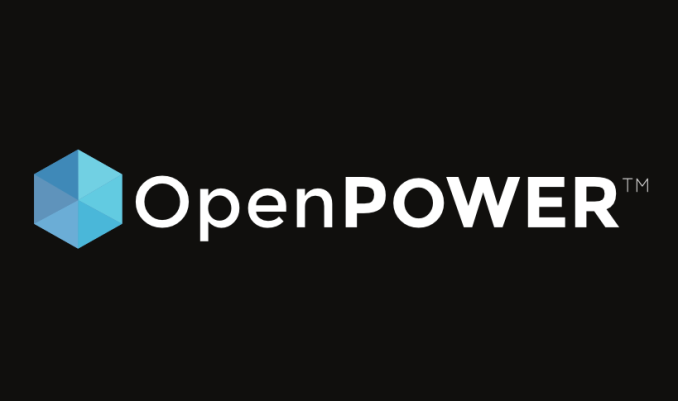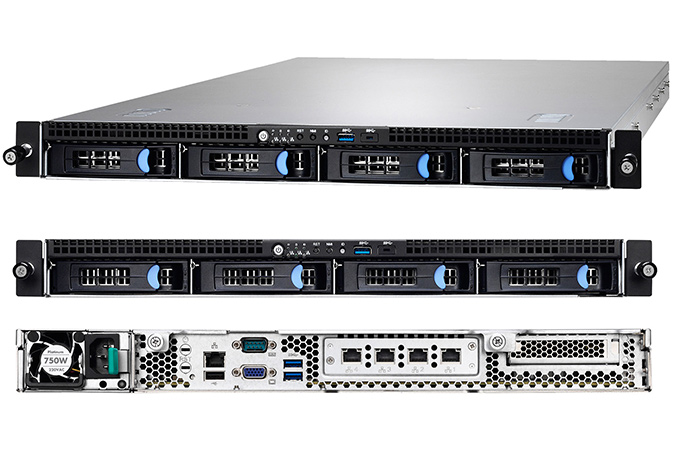The OpenPOWER Saga Continues: Can You Get POWER Inside 1U?
by Johan De Gelas on February 24, 2017 8:00 AM EST
Back in April 2016, Tyan has introduced its IBM POWER8-based 1U servers at the OpenPOWER Summit in San Jose, California. The server market is dominated by five OEMs: HPE, Dell, IBM, Lenovo, and Cisco, with ODM Quanta and HPC specialist Supermicro being the challengers. So the fact that Tyan also sells POWER8 servers can hardly be considered a game changing fact. However, Tyan does punch well above its weight. Note that there are only four OpenPOWER POWER8 platforms out there:
- The Wistron's Polaris was the basis for the heavy duty S822LC (see our review here). An improved version, the Polaris Plus was the first Power8 + P100 NVLink, probably the fastest 2U HPC server available (see here).
- The Supermicro "Briggs" which is found in the latest IBM S822LC "For Big Data".
- The Rackspace "Barreleye"
- The Tyan Habanero.
As far as we know, the Supermicro board is only available as an IBM server.
The Rackspace Barreleye is the odd one out: it is 1.25 U (instead of 2U) high, 21 inches wide, and needs the power shelves of "OpenRack". The cool thing is that it is no longer a prototype; it is a server that can actually be bought. This means that those who want to start over and make use of the many advantages of OCP have a real choice between the Intel Xeon and IBM POWER. Such servers - even in low quantities - are available from Penguin Computing (Magna 1015), Mark III systems, and Stack Velocity.
Of course, most datacenters are not switching to OCP racks (yet). If you want a standard 19 inch wide OpenPOWER server, there is a pretty good chance your server is based upon the Tyan Habanero. Habanero was not only the platform in most of the Tyan POWER8 offerings, but it is also the board that can be found inside the IBM S812LC and the Penguin Computing Magna 2001. Of course, the OpenPOWER server market is still a young and small market, but Tyan did have quite a bit of impact.
So when we saw that Tyan made a 1U server based upon this Habanero platform, that caught our eye. The power-hungry POWER8 inside a density optimized form factor? And they feed it with a PSU of "only" 750 W? Remember, most POWER8 servers come with 1000+ Watt PSUs.
OpenPOWER: Survive or Thrive?
Now at this point you may be asking: yet another article about OpenPOWER? Isn't all effort going to waste as IBM's piece of the server market is shrinking and Intel reigns supreme? Why would IBM be able to succeed where so many others have failed?
We are among the first to recognize that Intel still rules the server world, and that there is no alternative to the midrange Xeon E5 when you want the best performance-per-watt available. Furthermore the arrival of servers based upon AMD's Naples CPU will put even more pressure on all non-x86 server CPU alternatives, as it is expected to ship with up to 32 cores, 64 thread, offer 8 DDR4 channels and integrate no less than 128 PCIe lanes. And in the long-run (and perhaps most importantly), it will force Intel to come up with better performance/watt/dollar offerings, ratcheting up the pressure on non-x86 server CPUs even further.
As important as performance-per-watt is, several markets – HPC, Analytics, and AI chief among them – consider absolute performance the most important metric. Wattage has to be kept under control, but that is it. Who cares whether the CPU is consuming 200W or 120W when it is placed in a machine with a Terabyte of RAM and two 300W GPUs?
The fact that Rackspace and Google have invested quite a bit in the "Barreleye" and will continue to do so is a good sign (there is a POWER9 Barreleye) but not a guarantee. Both companies and all large datacenters still rely on Intel Xeons for the foreseeable future. The experiment can quickly be terminated.
However, the announcement that China's largest Internet portal – Tencent – will also be using OpenPOWER servers is another sign that the OpenPOWER technology convinces people that it is a viable alternative. At first, the deal was just to license the affordable IBM S822LC (made by Supermicro) to the Chinese reseller Inspur, and Inspur – being a "local" reseller – would sell it to Tencent. However, this deal spurred Inspur to begin developing their own OpenPOWER products. Consequently, OpenPOWER is allowing IBM and partners to break into the fastest growing server market: China. The openness of the software and hardware ecosystem and the strong performance of the CPU cores puts OpenPOWER is a very unique position in China compared to both Intel and ARM. That is a very solid business plan if you ask us.











28 Comments
View All Comments
Einy0 - Friday, February 24, 2017 - link
Articles like these make me wonder if some of these companies using IBM eServer iSeries(AS/400) as mid-level servers are wasting their money. I was always under the impression that Power was suppose to be tuned for database heavy workloads and hence have a massive advantage in doing so. I know the iSeries servers run an OS with DB2 built-in and tuned specifically for it but how much of an advantage does that really equate to?FunBunny2 - Friday, February 24, 2017 - link
-- I know the iSeries servers run an OS with DB2 built-in and tuned specifically for it but how much of an advantage does that really equate to?unless IBM has done a complete port recently, AS/400 "integrated database" was built before server versions of DB2 existed. it's/was just a retronym.
kfishy - Friday, February 24, 2017 - link
As ISAs becoming more and more relevant in the post-Moore's law world, where you can't solve a computational problem just by throwing ever more transistors at it, I wonder if this opens up opportunity for POWER to carve out niches left out by Intel's more fixed and general purpose approach.At the same time, POWER will have to contend with a nascent but rising and truly open ISA in RISC-V, where companies can simply implement the subsets of the ISA that they need. The next decade in processor architecture is going to be interesting to watch.
FunBunny2 - Friday, February 24, 2017 - link
-- As ISAs becoming more and more relevant in the post-Moore's law world, where you can't solve a computational problem just by throwing ever more transistors at itgiven that ISA has been reduced to z, ARM, and X86 not counting Power, of course. and ARM might not really qualify as equivalent. for those ancient enough, or well read enough, know that up to and during the "IBM and 7 Dwarves" era, ISA and even base architecture, made a varied ecosystem. not so much anymore. and I doubt anyone will invent a more efficient adder or multiplier or any other subunit of the real CPU. just look at the screen shots of chips over the last couple of decades: the real CPU area of a chip is nearly disappeared. in fact, much (if not most) of the transistor budget for some years has been used for caching, not ISA in hardware. so called micro-architecture is just a RISC CPU, and the rest of the chip is those caches and ever more complicated "decoder". that and integrating what had previously been other-chip functions. IOW, approaching monopoly control of compute.
I expect the next decade to be more of the same: more cache and more off-chip function brought on chip. actual CPU ISA, not so much.
aryonoco - Saturday, February 25, 2017 - link
Thank you Johan. Great article.Not all AnandTech articles live up to the standards set in the days past, but your articles continue your own excellent standards.
Very much looking forward to POWER 9 chips. Hopefully they have also done the work to port the toolchain and important software already to it this time and we won't have to wait another 12 months after release to be able to compile normal Linux programs on it.
Also, 12 fans running at 15,000 rpm in a 1U? What did that sound like?! Wow!
JohanAnandtech - Sunday, February 26, 2017 - link
Thx Aryonoco. Not all of those 12 fans were running at top speed, but imagine a Jumbo jet taking off sound. It clearly show how hard it is to cool IBM's best in a 1U: you have to limit the clockspeed to about 2/3 of what it is capable off and double the number of fans.yuhong - Wednesday, March 1, 2017 - link
"Unfortunately, the latest 8 Gbit based DIMMs are not supported."Micron don't make these chips anymore:
http://media.digikey.com/pdf/PCNs/Micron/PCN_32042...
Interestingly, Crucial is selling 32GB DDR3 quad rank RDIMMs again (but not LR-DIMMs):
http://www.crucial.com/usa/en/ct32g3erslq41339
mystic-pokemon - Sunday, March 5, 2017 - link
For folks who are saying that POWER only looks good on paper. NOT true.I know shit ton of stuff about one of the server Johan listed above. He has a point when he says Power consumption is only so much important.
In short, when you combine all aspects to TCO model: POWER8 server delivers most optimal TCO value
We consider all the following into our TCO model
a) Cost of ownership of the server
b) Warranty (Lesser than conventional server, different model of operations)
c) What it delivers (How many independent threads (SMT8 on POWER8 remember ? 192 hardware threads), how much Memory Bandwidth (230 GBPs), how much total memory capacity in 1 server ( 1 TB with 32 GB)
d) For a public cloud use-case, how many VMs (with x HW threads and x memory cap / bw ) can you deliver on 1 POWER8 server compared to other servers in fleet today ? Based on above stats, a lot .
e) Data center floor lease cost in DC ( 24 of these servers in 1 Rack, much denser. Average the lease over age of server: 3 years ). This includes all DC services like aggers, connectivity and such.
f) Cost per KWH in the specific DC ( 1 Rack has nominal power 750W)
All this combined POWER has good TCO. Its a massively parallel server, what where major advantage comes from. Choose your workload wisely. That's why companies continue to work on it.
I am talking about all this without actually combining with CAPI over PCIe and openCAPI. With POWER9 all this is getting even better. Get it ? POWER is going no where.